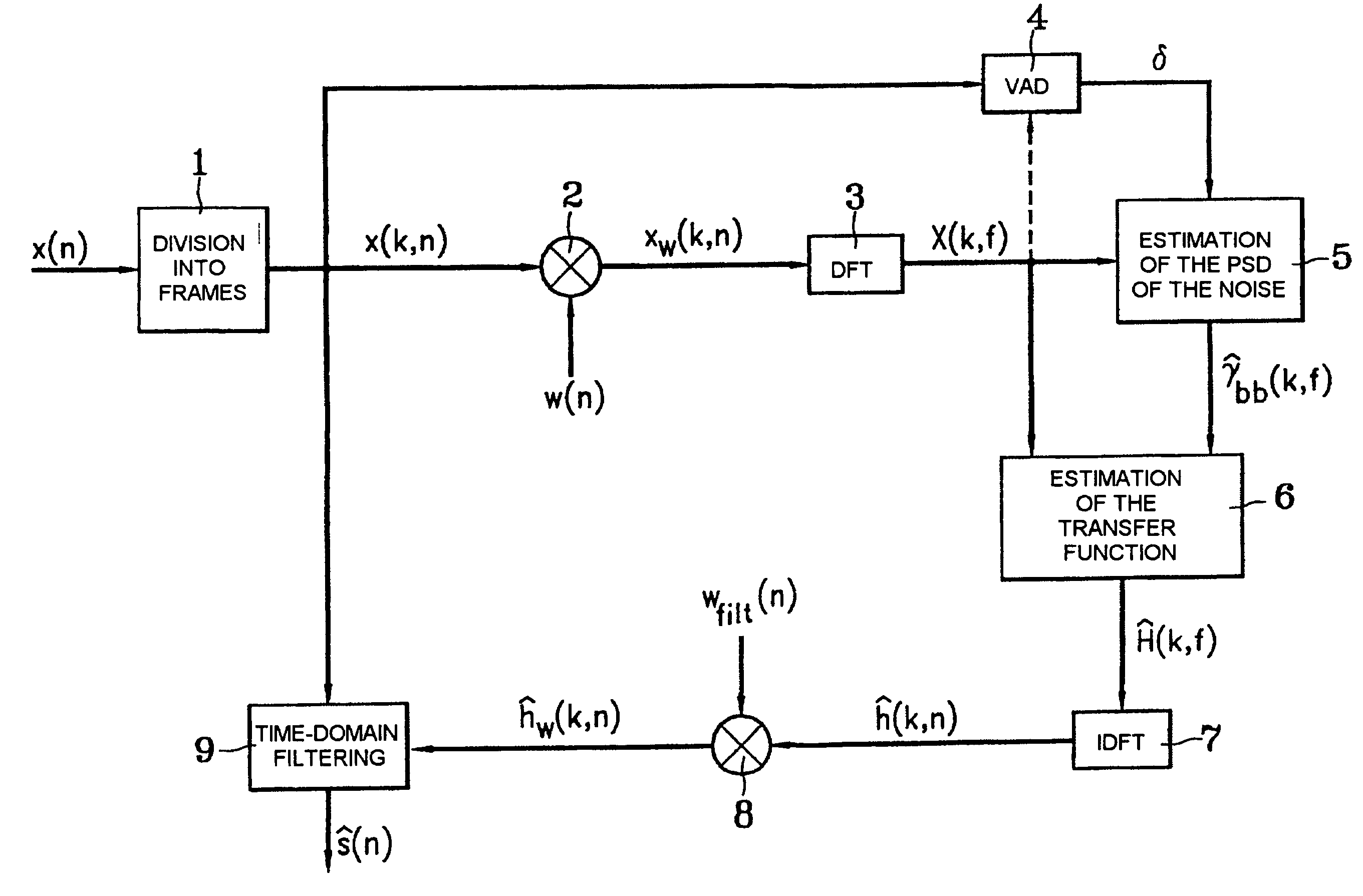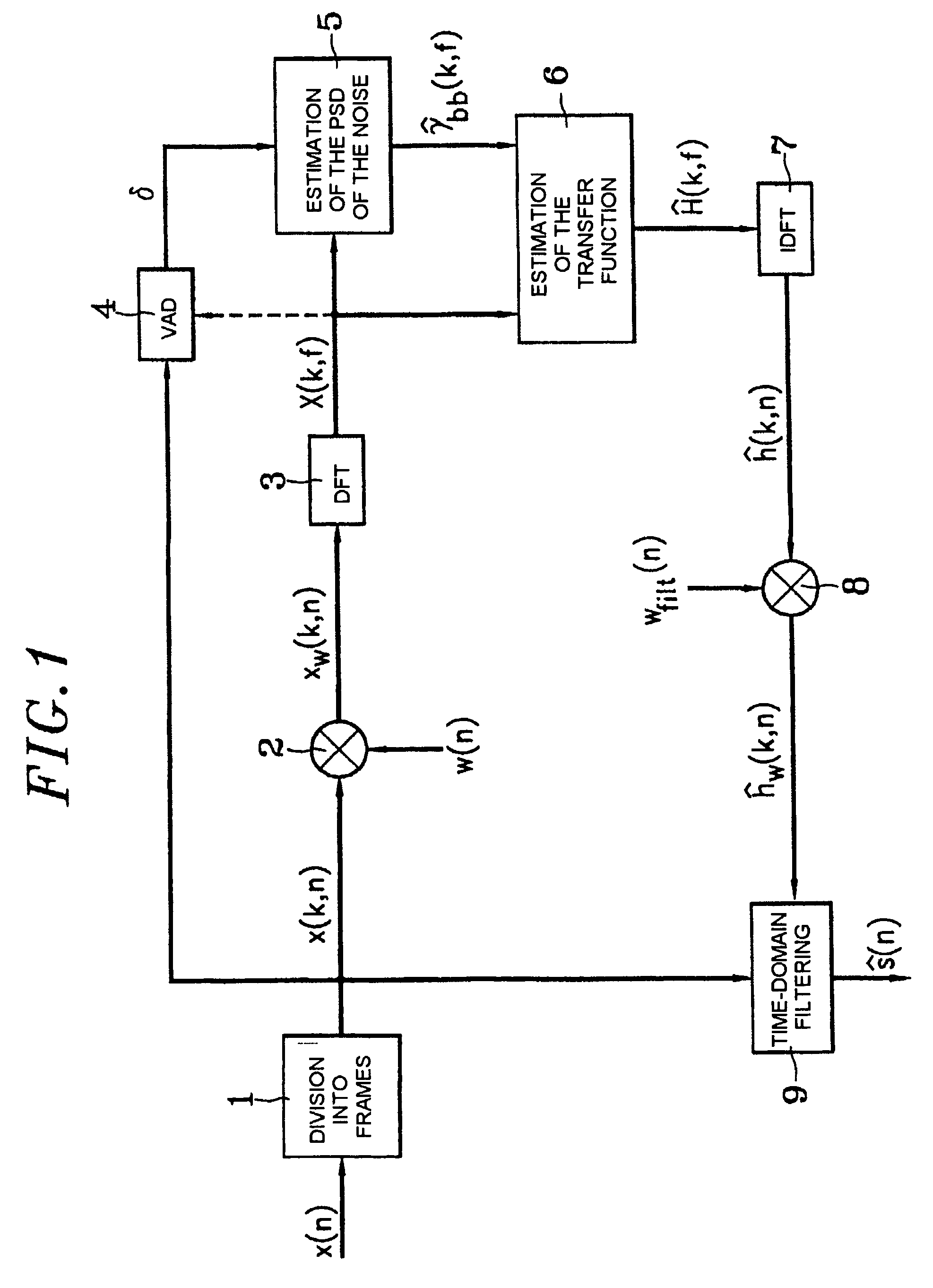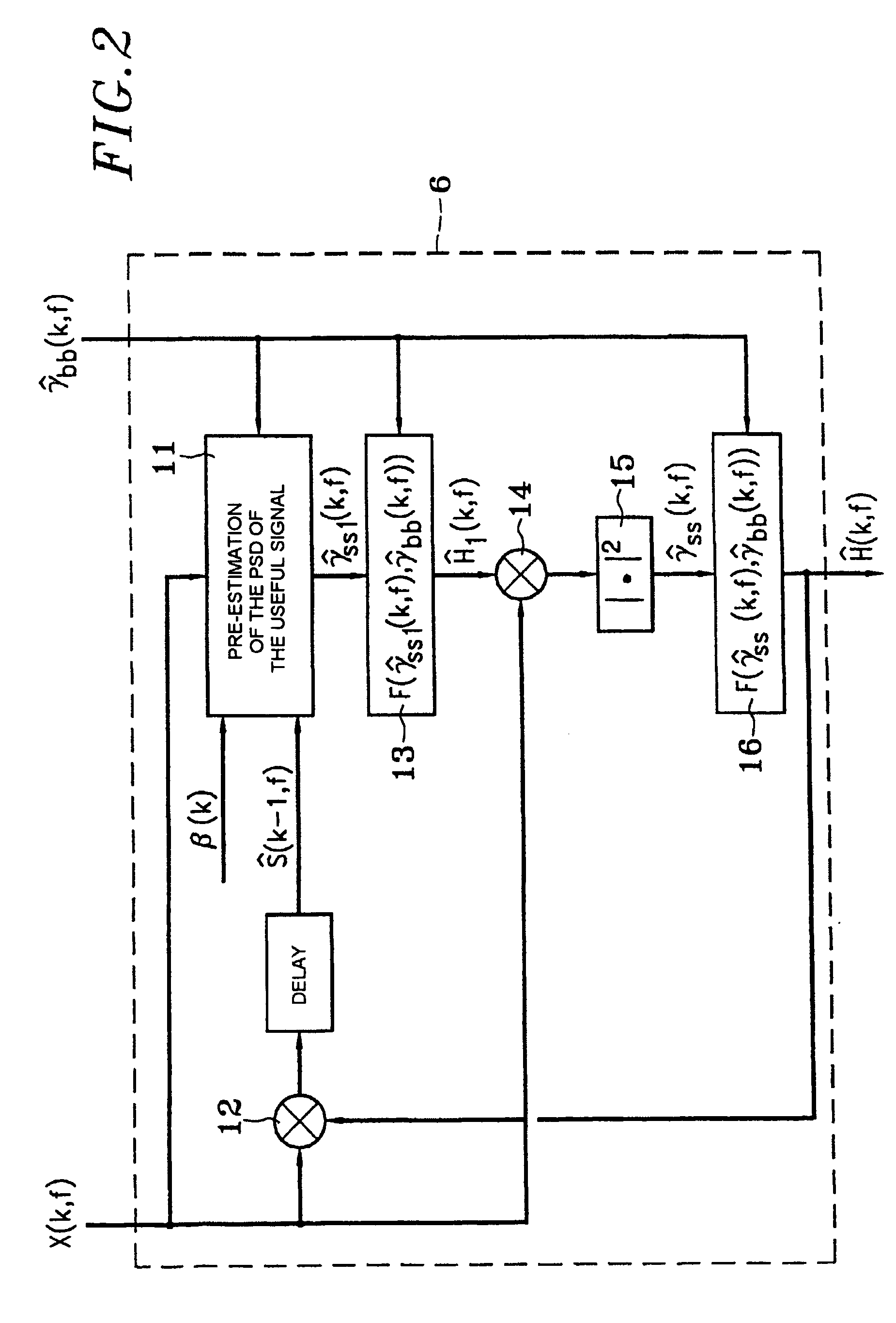Noise reduction method and device using two pass filtering
a noise reduction and filtering technology, applied in the field of signal processing techniques, can solve the problems of greatly impaired performance of interference signals, increased order, and increased nois
- Summary
- Abstract
- Description
- Claims
- Application Information
AI Technical Summary
Benefits of technology
Problems solved by technology
Method used
Image
Examples
example 1
[0122]This example device is suited to an application to spoken communication, in particular in the preprocessing of a low bit rate speech coder.
[0123]Non-overlapping windows are used to reduce to the theoretical maximum the delay introduced by the processing while offering the user the possibility of choosing a window that is suitable for the application. This is possible since the windowing of the input signal of the device is not subject to a perfect reconstruction constraint.
[0124]In such an application, the windowing function w(n) applied by the multiplier 2 is advantageously dissymmetric in order to perform a stronger weighting on the more recent half of the frame than on the less recent half.
[0125]As illustrated by FIG. 4, the dissymmetric analysis window w(n) can be constructed using two Hanning half-windows of different sizes L1 and L2:
[0126]w(n)={0.5-0.5×cos(πnL1)for0≤n<L10.5+0.5×cos(π(n-L1+1)L2)forL1≤n<L1+L2=L(18)
[0127]Many speech coders for mobiles use fr...
example 2
[0138]This example device is suited to an application to robust speech recognition (in a noisy environment).
[0139]In this example, analysis frames of length L are used which exhibit mutual overlaps of L / 2 samples between two successive frames, and the window used is of the Hanning type:
[0140]w(n)=0,5-0,5·cos(2πnL-1)for0≤n<L(23)
[0141]The frame length is fixed at 20 ms, that is L=160 at the sampling frequency Fe=8 kHz, and the frames are supplemented with 96 zero samples (“zero padding”) for the FFT.
[0142]In this example, the calculation of the TF of the noise-reducing filter is based on a ratio of square roots of power spectral densities of the noise {circumflex over (γ)}bb(k,f) and of the useful signal {circumflex over (γ)}ss(k,f), and consequently on the moduli of the estimate of the noise
[0143]B^(k,f)=γ^bb(k,f)
and of the useful signal
[0144]S^(k,f)=γ^ss(k,f).
[0145]The voice activity detection used in this example is an existing conventional method based on short-term...
PUM
 Login to View More
Login to View More Abstract
Description
Claims
Application Information
 Login to View More
Login to View More - R&D
- Intellectual Property
- Life Sciences
- Materials
- Tech Scout
- Unparalleled Data Quality
- Higher Quality Content
- 60% Fewer Hallucinations
Browse by: Latest US Patents, China's latest patents, Technical Efficacy Thesaurus, Application Domain, Technology Topic, Popular Technical Reports.
© 2025 PatSnap. All rights reserved.Legal|Privacy policy|Modern Slavery Act Transparency Statement|Sitemap|About US| Contact US: help@patsnap.com



